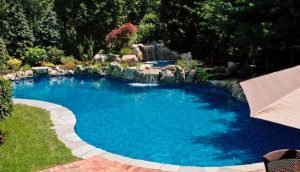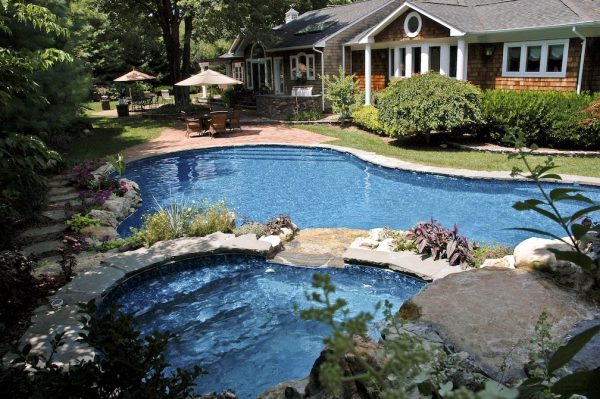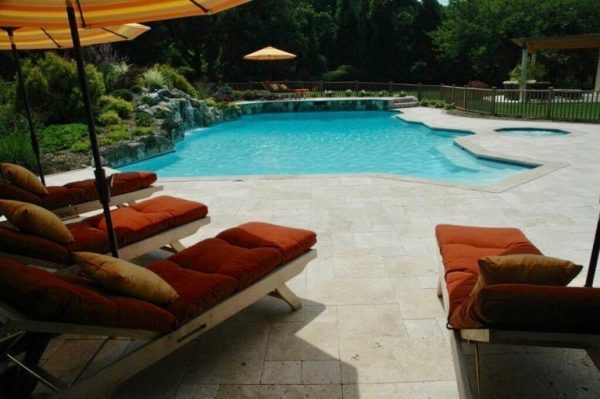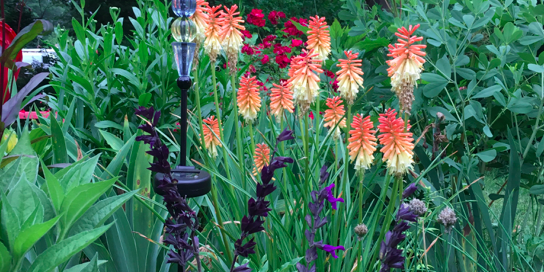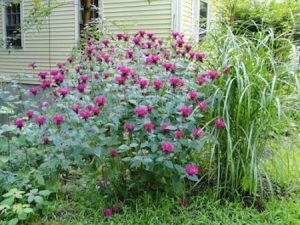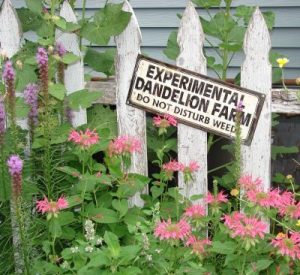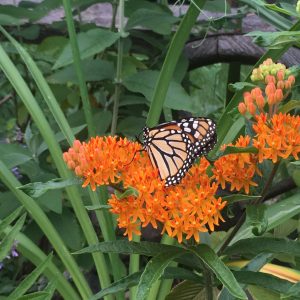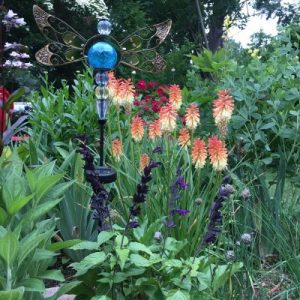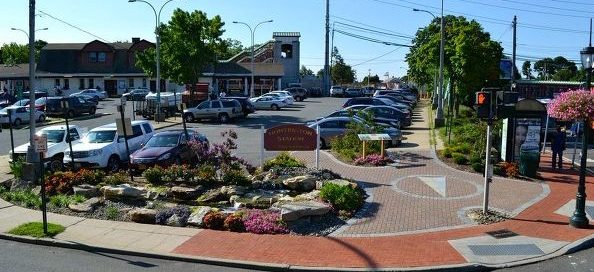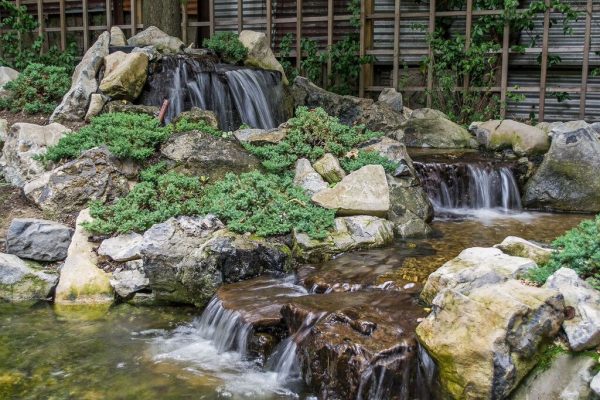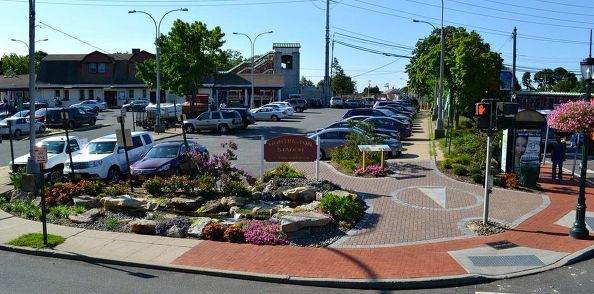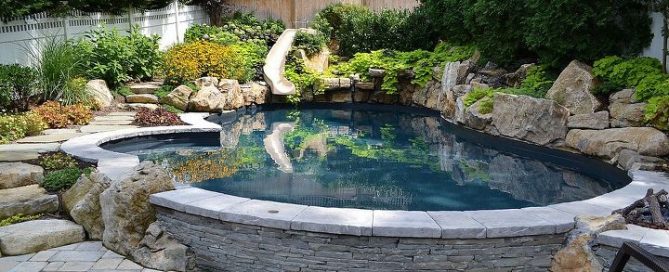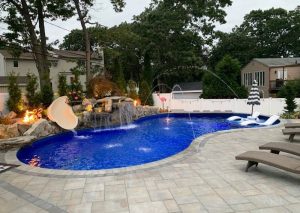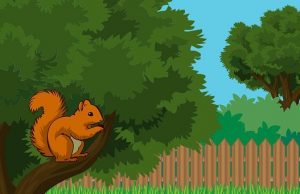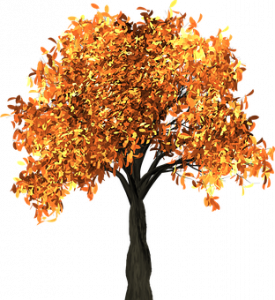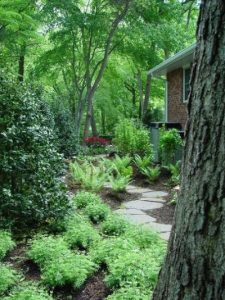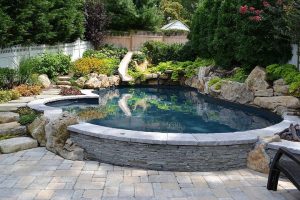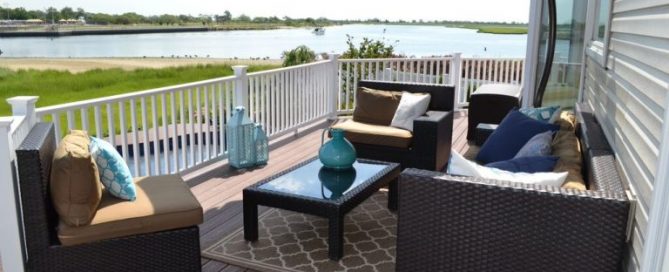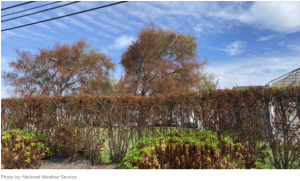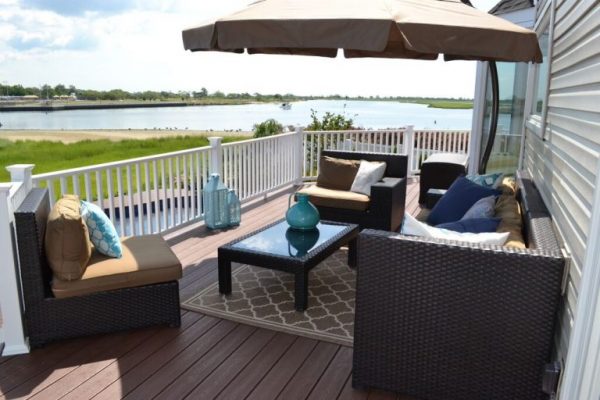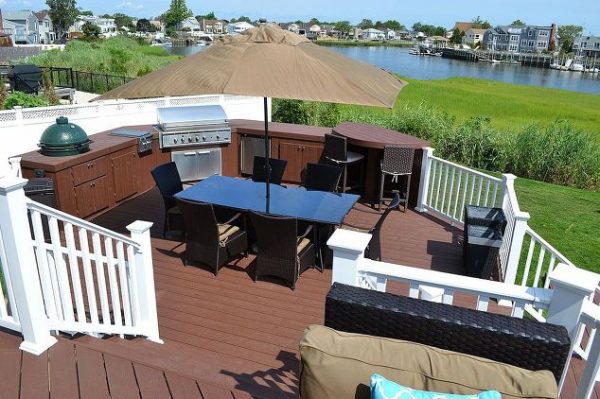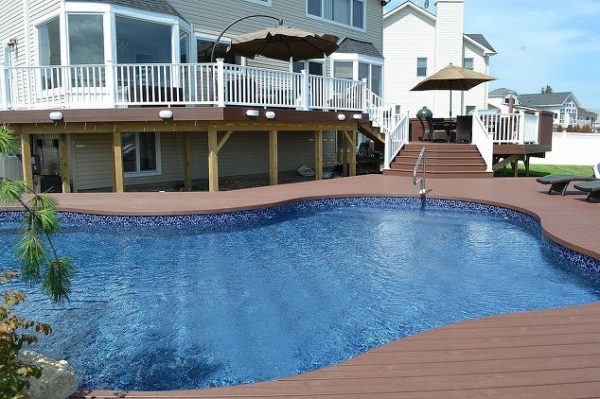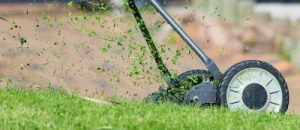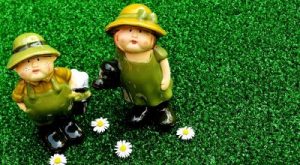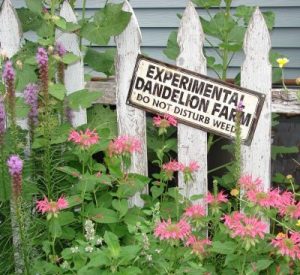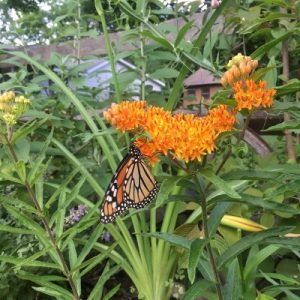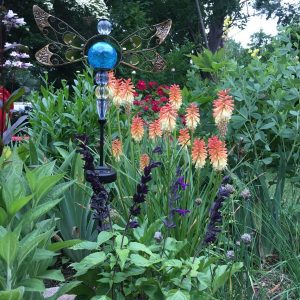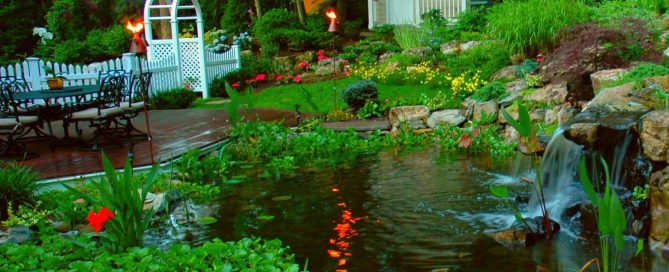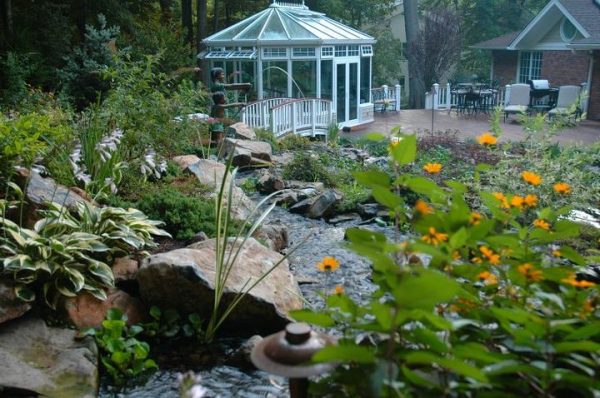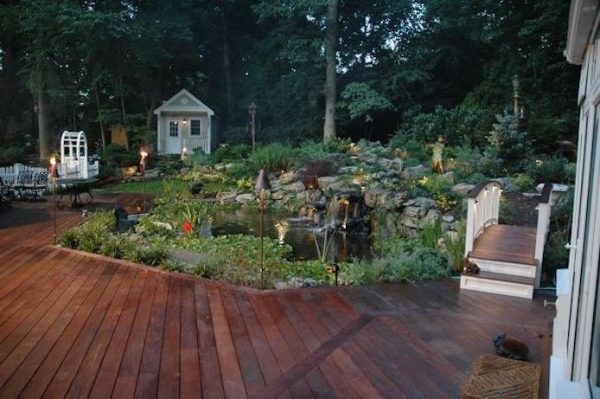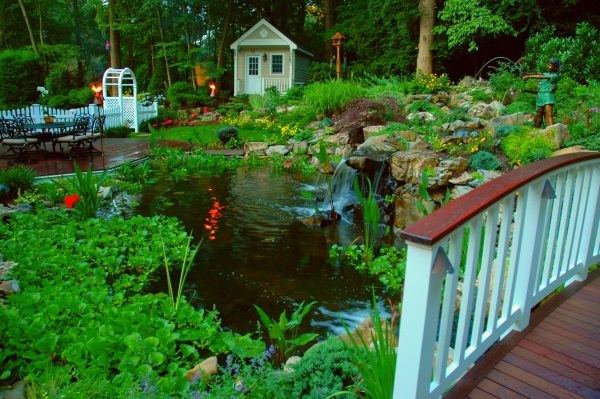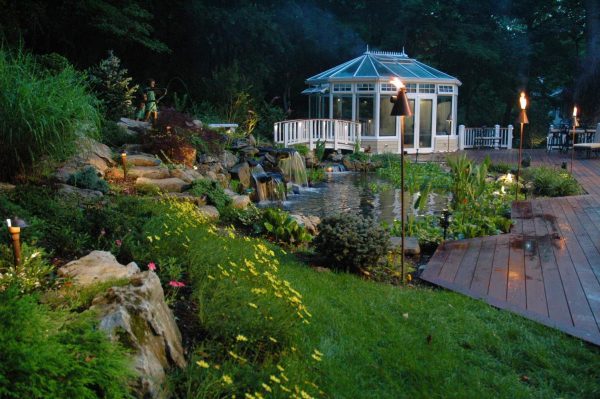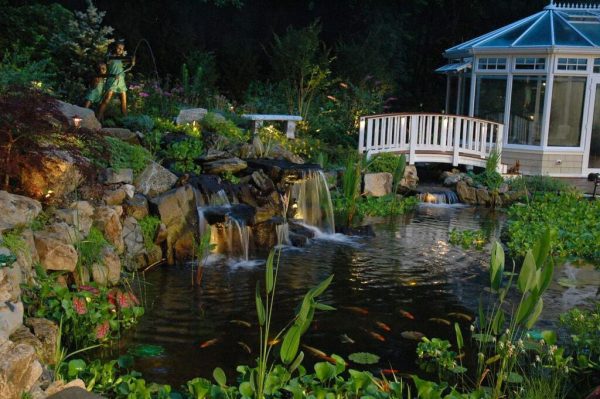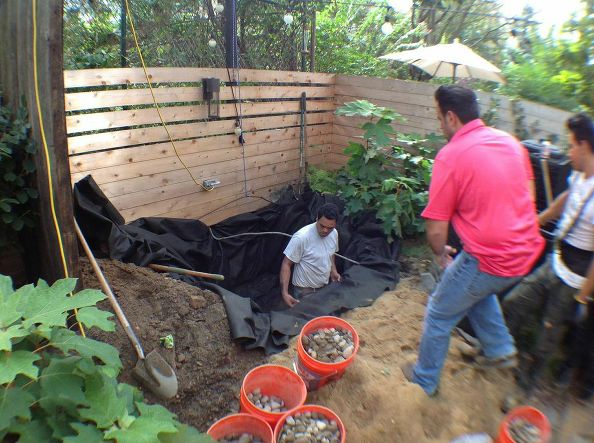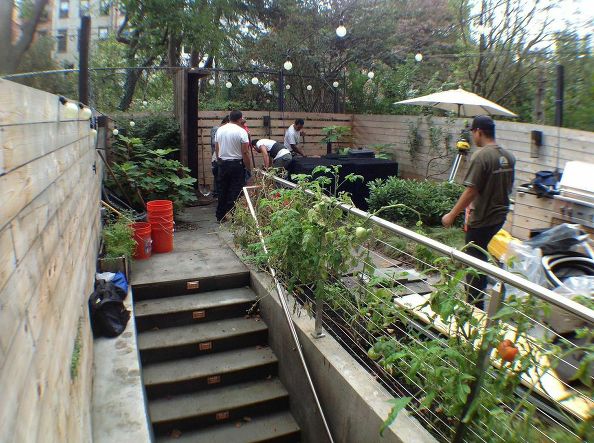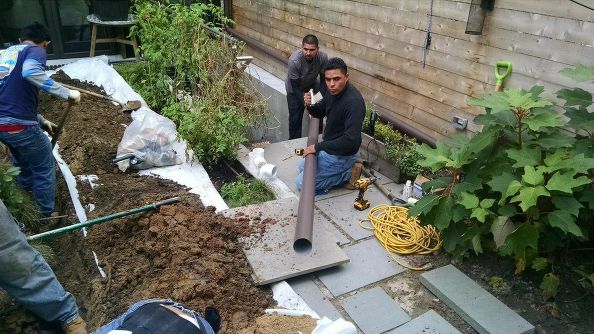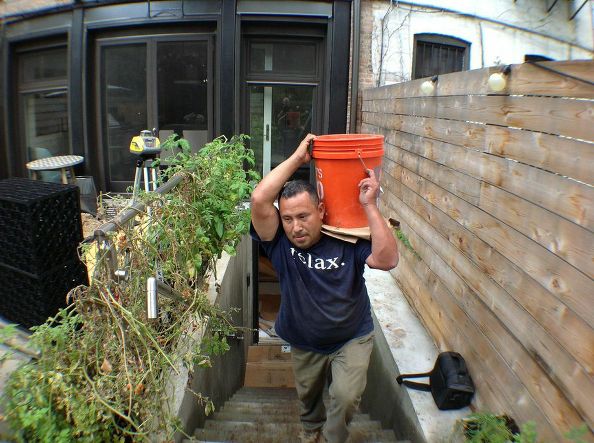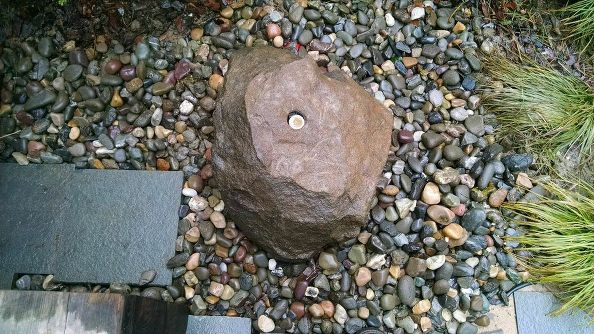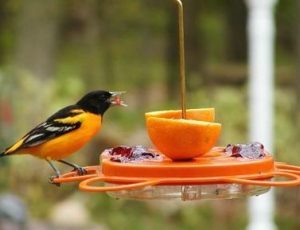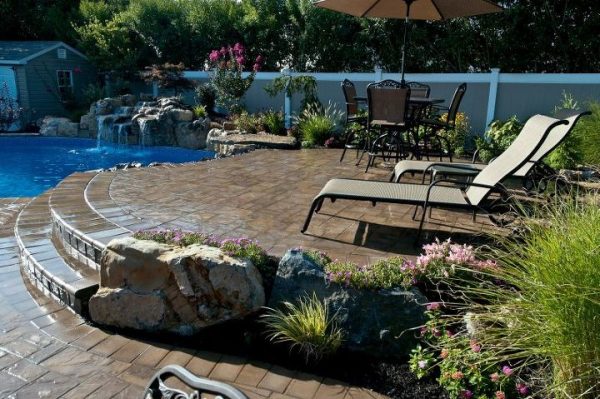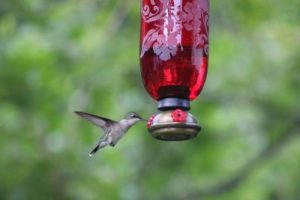Pool, Spa, Pond & Stream In Keeping with Natural Surroundings
Along with a concrete vinyl-lined pool with waterfalls, for this backyard oasis we added a raised spillover spa with an additional waterfall, a stream with waterfalls, plus a koi pond.
“We had a lot to consider when we designed this,” says Dave Stockwell. “First, of course, the property’s trees — mature maples, oaks and pines — had to be preserved.
“But we also considered the topography, the soil, solar exposure, the overall size of the property, where we could place active and passive use areas, not to mention the home’s architecture.”
Dave adds that each feature had to fit with nature and this particular landscape.
Besides Deck and Patio’s technical knowledge, such an accomplishment requires a true passion for nature in order to balance the relationship between architecture with its natural surroundings.
“Needless to say we were thrilled to have been recognized for what accomplished in the design and installation of the pool, spa and water features,” says Dave. “We won two prestigious awards from NESPA and APSP for the upgrade.”
The key to our design was locating various water features within a limited space so as not to disturb the environment. Despite building restrictions, the finished project was rich in amenities: Here’s some more details for this project:
This concrete pool has a vinyl liner. We positioned it into the natural surrounding landscape considering carefully any existing trees and mature shrub root systems. Although it’s not seen in this photo, the clients can enjoy the nearby koi pond and waterfalls while relaxing in their spa. The spa also has its own overhead heated waterfall, which can be adjusted to cool in warmer weather.
This 5’ high multi-level waterfall and 35’ meandering stream discharge into 10’ x 15’ freeform Koi pond (below).
Pond was built to protect the fish against natural predators. Pond’s small cave, for example, provides a hiding place where koi can lay dormant during winter months and hide when necessary.
The design of this pool and spa appears “organic” with its natural surroundings; they perfectly fit with the clients’ desire for harmonious bodies of water in keeping with their natural looking residence, patio, outdoor kitchen.
Vibration flowers and fragrance is provided by many varieties of perennials, evergreen and deciduous plantings — planned for successional color throughout pool season.


